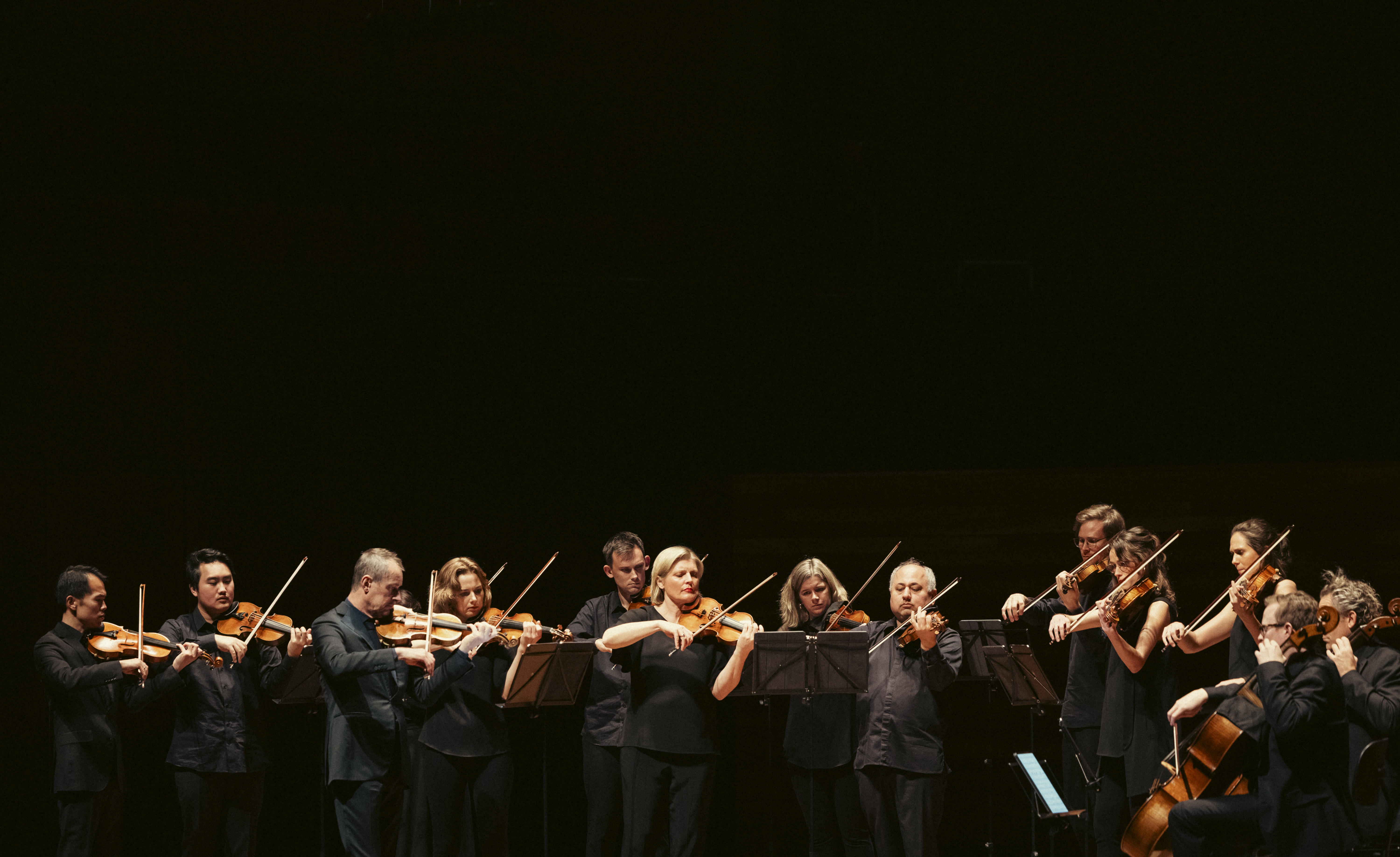
Gustav Mahler composed The Song of the Earth, or Das Lied von der Erde, between 1908 and 1909, after a summer of disaster the year previous.
The piece of music contains the anguish and existentialism of a father who has recently endured the tragedy of his daughter’s death from scarlet fever, and of the man who has discovered he has an incurable congenital heart defect.
They say things come in threes, and Mahler wrote to a friend, “With one stroke I have lost everything I have gained in terms of who I thought I was, and have to learn my first steps again like a newborn,” when those two incidents coincided with him also being forced by political posturing to resign as Director of the Vienna Court Opera.
Out of despair can come hope. And emotions of anguish can lead to awe-inspiring music. That’s unequivocally the case here: Mahler’s Song of the Earth is some of the most ravishing, and powerfully moving, music written by the composer, and written in the early 20th Century by anyone.
Here’s a brief introduction to the story behind the work and how the music sounds.
What is Mahler’s Song of the Earth about?
Mahler’s Song of the Earth is a piece of music about facing the only unavoidable part of life: death. Mahler had endured a year of crisis in which he was ousted from the Vienna State Opera, diagnosed with a fatal congenital heart condition, and grieving the death of his daughter.
The piece is divided into six songs, which the two singers take it in turns to perform with the orchestra. The songs are The Drinking-Song of the Earth’s Sorrow, The Lonely One in Autumn, Of Youth, Of Beauty, The Drunkard in Spring, and The Farewell.
The opening drinking song is one of sorrow, a thread that connects all six songs. The Autumn in the second song sees the protagonist “weep much in my loneliness”, and even the glimpses of youth and beauty are as if at a distance; at a sorrowful remove. The Drunkard in Spring seems to get a reprieve – with a touch of irony perhaps, singing “If life is only a dream, Why labour and worry?” – before the final song delivers a huge, existential and eternal farewell; a cathartic conclusion.
“My heart is still and awaits its hour. The beloved earth everywhere blossoms and greens in springtime Anew. Everywhere and forever the distances brighten blue! Forever… forever...”, the song concludes.
Mahler took the texts for his songs from The Chinese Flute, a compendium of ancient Chinese poems. Five of the songs are adapted from the works of Chinese poet Li-Tai-Po, and the second song, The Lonely One in Autumn, is by Li-Tai-Po’s contemporary Chang-Tsi. Their poetry is known for extreme imagery, glorifying alcohol, and sympathy for the everyday person.
In Mahler’s letters to his friend Walter Bruno (mentioned above), he writes: “How should I describe such a colossal crisis?... Yet I am thirstier than ever for life and I find the ‘habit of living’ sweeter than ever.” The poems reflect this state of mind.
The great composer-conductor Leonard Bernstein called The Song of the Earth the greatest “symphony” of this master symphonist. It tells it all. The sweet bitterness of our brief lives. Darkness, light, cruelty, love, beauty and at last, catharsis.
Reminiscing about touring the work with tenor Stuart Skelton, ACO Artistic Director Richard Tognetti says:
“It was a tour with Weimar and Barry H and it was hot or was it?
It felt hot. Stuart Skelton was on fire. But it’s not all burning passion in Das Lied.
There’s dread. There’s drunkeness.. drunk on life-ness.
But the main thing is the perfume. It’s music that leaves strange scents in the air. They linger - oddly and becomingly. It’s a foreign world that Mahler invites us into; and makes us feel at home.
Can’t wait for this strange and wondrous musical landscape to descend on us with the boy from The Shire. That’s Stuart... Yep Shire Boy through and through.”
The ‘curse of the ninth’
Mahler intended The Song of the Earth to be “a Symphony for Tenor, Contralto (or Baritone) and Orchestra,” but he didn’t assign it a number.
This was because, like other composers of the time, he was haunted by his belief in the “curse of the ninth” – classical music’s ’27 Club’, perhaps – in which a collection of great composers happened to die after completing their ninth symphony and before they could either start or finish their tenth.
Beethoven, Schubert, Bruckner and Ralph Vaughan Williams are just a few of the well-known composers – including Mahler, who was sadly unable to outrun his superstition – who did not live to write a new symphony after their ninths.
What does the music sound like?
As ACO Violin Maja puts it, Gustav Mahler’s music “comes from a dark but beautiful place that aspires to create eternal perfection.” It’s big, it’s luscious, it often calls for very large orchestras to make monumental sounds.
Mahler’s Song of the Earth we'll hear, conversely, calls for relatively smaller forces. The arrangement by Schoenberg is intricate, shimmering, a very special piece of orchestral writing full of colour, light and shades, and of course the boom and intensity of operative tenor and mezzo-soprano voices – for the Australian Chamber Orchestra provided by the peerless Australian singers Stuart Skelton and Catherine Carby.
Arnold Schoenberg’s arrangement of Mahler’s Song of the Earth
Arnold Schoenberg arranged Mahler’s Song of the Earth for his Society for Private Musical Performance, never intending it to be performed as widely as it has been.
Even though Mahler intended it as a symphony, the number of musicians Schoenberg asks for is relatively small. There is a flute, an oboe, a clarinet and bass clarinet, a bassoon, a French horn, percussion, piano and one of each violin 1, violin 2, viola, cello and bass. Schoenberg lets the voices of the mezzo-soprano and tenor really sing.
Schoenberg carefully preserved the texture and impact of the original, while giving the two soloists room to shine.
ACO Principal Viola Stefanie Farrands says: “I’m so looking forward to falling deep into the world of Mahler during our Song of the Earth tour. I’m always fascinated when a composer arranges the music of other composers, so I am particularly intrigued and inspired by the chamber version by Arnold Schoenberg (who was only born 14 years after Mahler). It will be so special to welcome back our friends from the wind and brass to give this powerful music both symphonic grandeur while retaining chamber intimacy.”
Who was Gustav Mahler?
Mahler was an Austrian composer and conductor known for his mastery of symphonic writing. He wrote nine symphonies and numerous other works, bridging the 19th-century Germanic orchestral tradition and the move into turn-of-the-century modernism.
"The symphony,” the great composer said, “must be like the world; it must embrace everything."
His music really does have those all-encompassing, utterly engrossing qualities.
Stuart Skelton and Catherine Carby star in Mahler's Song of the Earth, directed by Richard Tognetti, touring to Sydney, Melbourne, Brisbane and Canberra. Click here for tickets.
